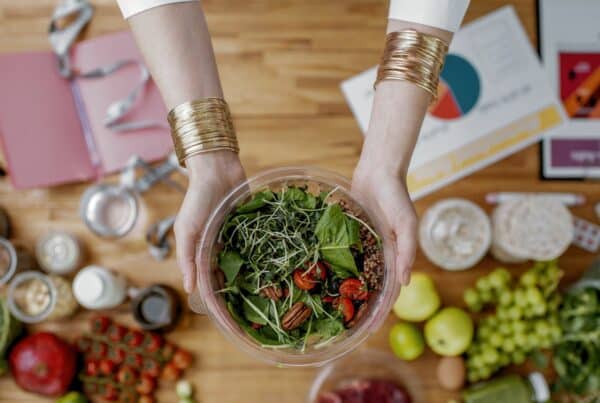The beauty industry has been fixated on finding a solution for healthy looking skin for decades. Understanding what encourages youthful, hydrated skin with minimal blemishes and wrinkles is the subject of various scientific studies. To hear our breakdown of nutrition for healthy skin, keep on reading!
Factors that impact the appearance of skin (acne, elasticity, hydration, wrinkles, dryness etc.) include environmental such as chronic sun exposure and ultraviolet irradiation, as well as poor nutrition, sleep deprivation, smoking and pollution. This article will outline various nutritional factors that can influence the appearance of skin for each life stage, with regards to acne and anti-aging effects.
Age 12 – 20 years
Adolescence is a time of growth and development, so it is essential to eat a balanced diet full of foods from each core food group. At this age, the body is prone to excess sebum production and acne. The production of sebum and acne is caused by various factors including inflammation. Heavily processed foods high in added sugar, trans and saturated fats have been linked to high levels of inflammation. Foods to include in your diet that might assist in reducing inflammation are;
- Wholegrains (e.g. wholegrain bread, quinoa, steel cut oats)
- Legumes (e.g. lentils, chickpeas, kidney beans)
- Healthy fats (e.g. fatty fish, extra virgin olive oil, avocado, nuts and seeds)
- Antioxidants found in colourful fruits and vegetables
There is also some evidence to suggest probiotics may assist in reducing the severity of acne.
Pregnancy/Lactation
During pregnancy and lactation, energy and protein requirements increase. Inadequate intake of energy and nutrients involved in skin health may increase your risk of skin changes and blemishes during pregnancy.
Specific nutrients to pay attention to during pregnancy include:
- Iron
- Folate
- Vitamin D
Iron helps to carry oxygen around the bloodstream. Without it, our skin may become dry and lose elasticity. Iron can be found in abundance in animal foods such as meat and dairy as well as legumes, nuts, wholegrain cereals and leafy greens.
Folate is essential for the growth and development of the foetus, therefore; it is important to maintain adequate folate levels. It also provides skin protection from UVB sunlight. Foods rich in folate include leafy green vegetables, beans, lentils, fortified breakfast cereals and fruit.
Vitamin D is suggested to protect against UV damage related cell death which would cause skin to have increased wrinkles and dryness. Vitamin D is sourced mostly through sunlight but also oily fish, egg yolk and some brands of milk fortified with additional vitamin D.
Many women experience acne during pregnancy due to high levels of androgens. To reduce acne be sure to limit heavily processed foods high in added sugar, saturated and trans fats. Including a range of wholegrains, fruits and vegetables will also help to reduce inflammation associated with acne.
Age 20 – 50 years
As the skin becomes less prone to oiliness and acne as we progress from puberty to adulthood, the focus shifts towards protection from UV damage, maintaining adequate levels of vitamin D and promoting youthful looking skin by incorporating a range of nutritious foods.
Beta-carotene, lycopene, tocopherols, flavonoids, vitamin A, C, D and E, omega 3 fatty acids, some proteins and lactobacilli are nutrients in foods that have been shown to affect the processes within the body that can assist with healthy looking skin.
Beta-carotene found in sweet potato, carrots, pumpkin and mangoes has been linked to reduced UV-erythema (inflammation/reddening of the skin). Lycopene has been suggested to have a protective effect against sunburn and is found in cherries, tomatoes, watermelon and strawberries. Omega 3 Fatty Acids are found in oily fish, walnuts, chia seeds and flaxseeds.
Another important thing to consider when trying to reduce the appearance of ageing is the ingestion of high sugar foods such as lollies, cakes, biscuits, chocolate and soft drink. The consumption of too much sugar can accelerate signs of aging, which leads to increased stiffness and reduced elasticity and not so youthful looking skin.
50+ years
The nutrition information above is still very relevant to people aged 50 years and above however, there are specific factors to consider for women in this age group in particular in pre-, active and post- menopause. Menopause causes a reduction in oestrogen which results in thinner skin, an increase in the number and depth of wrinkles, increased skin dryness, and decreased skin firmness, elasticity and reduced collagen. Vitamin C, zinc and copper play a role in collagen production.
Vitamin C is found primarily in fresh fruits and vegetables such as citrus fruits, blackcurrant, rosehip, guava, chili pepper or parsley. Vitamin C intake is also associated with the reduced appearance of wrinkles and senile dryness.
Zinc can be found in meat, nuts and eggs.
Copper can be found in oysters, spirulina and leafy greens.
Hydration is also an essential component of nutrition for all age groups however, as we age various reasons start to arise for reduced fluid intake such as reduced thirst, reduced kidney function etc. Maintaining hydration has been shown to improve the elasticity of the skin, reduce roughness and dryness. It is recommended to have 35-45ml/kg/d of fluid (water) for the general population.
Summary
Although there are different factors that impact the appearance of skin at different ages, the overall takeaway message from the research conducted on nutrition for healthy skin is to eat a wide variety of foods from the core food groups and stay hydrated.
To chat to one of our qualified dietitians, or for more information on nutrition for healthy skin, please don’t hesitate to get in contact!







